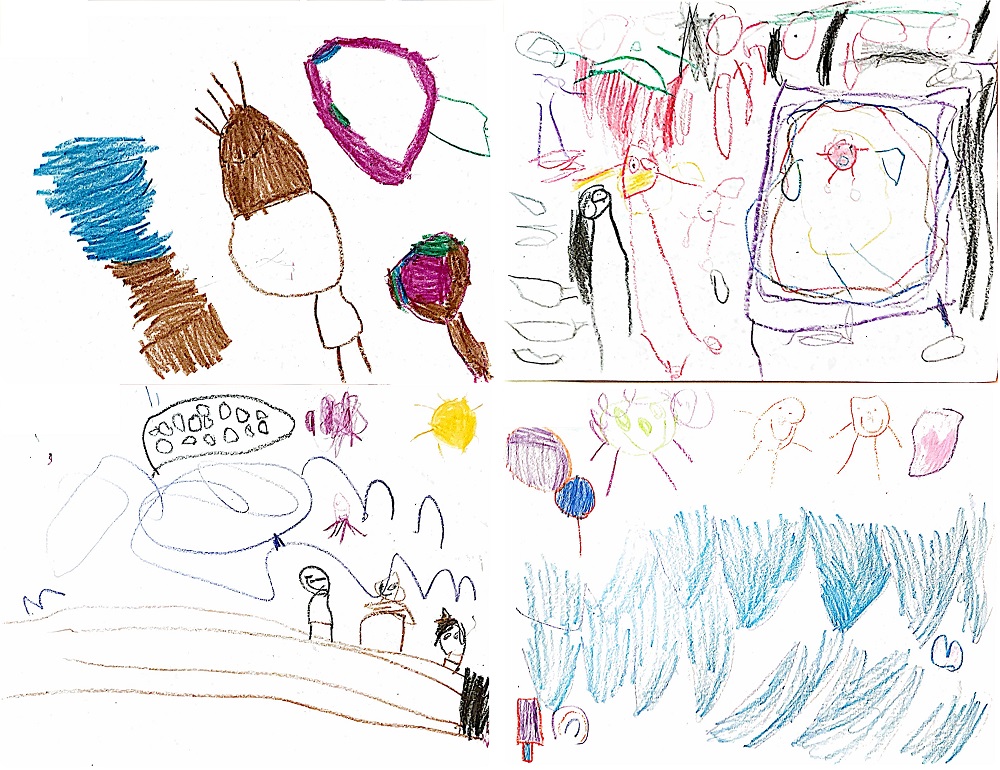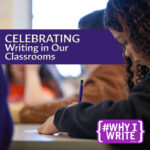 This blog post was written by NCTE member Carmela Valdez as part of a blog series celebrating the National Day on Writing®. To draw attention to the remarkable variety of writing we engage in and to help make all writers aware of their craft, the National Council of Teachers of English has established October 20 as the National Day on Writing®. Resources, strategies, and inclusion in a blog post does not imply endorsement or promotion by NCTE.
This blog post was written by NCTE member Carmela Valdez as part of a blog series celebrating the National Day on Writing®. To draw attention to the remarkable variety of writing we engage in and to help make all writers aware of their craft, the National Council of Teachers of English has established October 20 as the National Day on Writing®. Resources, strategies, and inclusion in a blog post does not imply endorsement or promotion by NCTE.
Writing is my favorite time of day, and it has been for a long time. It’s the time of day when it’s only about them. I teach preK–4, but I’ve been an early childhood teacher all of my career. PreK was a revelation to me in every part of teaching except for writing. I was worried that my idea of writing would not be developmentally appropriate, so I decided to make it simple. We all have a story to tell. Some people tell stories out loud, some people write them, and some people tell stories through pictures. I knew my students were not yet telling stories with writing, so we did the other two. We tell stories, small yet significant to the storyteller, we share stories with each other.
My first official writing workshop lesson was connected to my read-aloud lesson, which was “Readers read pictures” using Carmen Lomas Garza’s Family Pictures. So then the mini-lesson became “Writers tell stories with pictures.” The stories were beautiful and joyful. “This is me and my mom at the beach, this is my family at Christmas, this is all of my family.” My students were excited! They were engaged!! They were writers. The anxiety fell away and they were fully themselves.
One particular student, Jaime, a heritage language learner in a Spanish dual language class, struggles with anxiety, and every time we would work with pencil and paper, he would cry. His mother told me he was worried about “homework.” But when we wrote with pictures, he was so joyful. He drew what is most important and present to him, his family: his dad and his mom and brother. You can see them here in his drawing. From tears to joy, he became a writer.
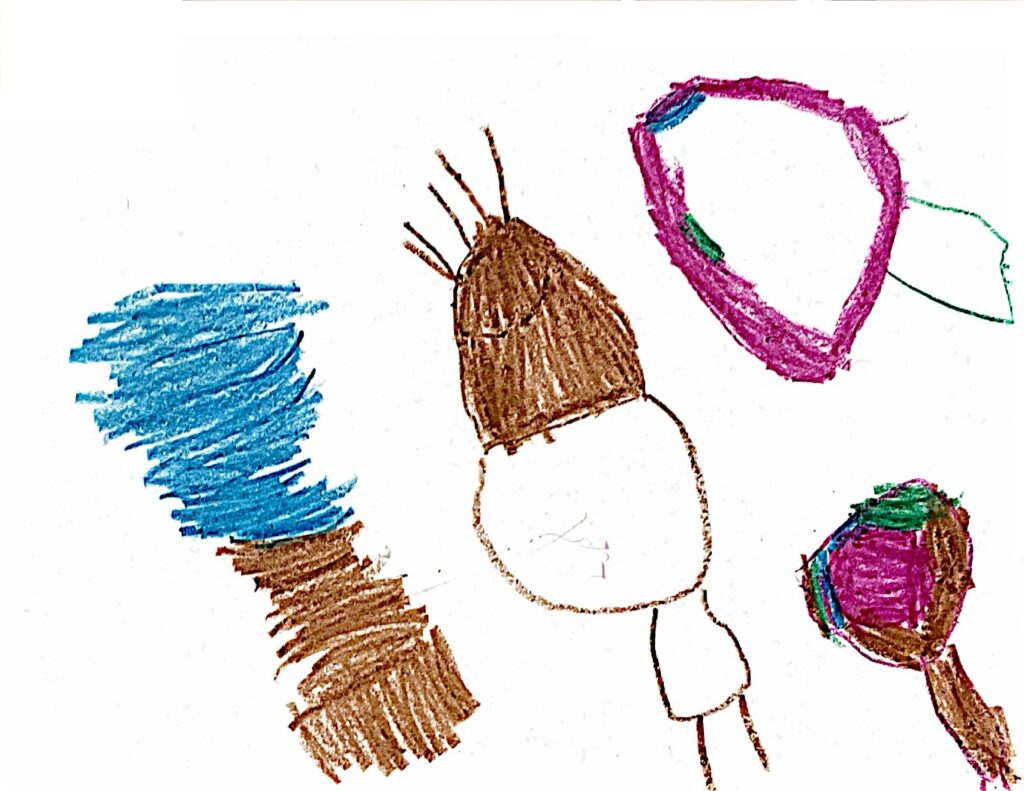
Another student, Kayla, is an English speaker in a Spanish immersion dual language program. She sometimes does not want to do what the class is doing. Her family is very committed to the dual language program. Kayla resisted engaging in this writing activity until I reminded her that her mother would see it. She instantly went to work and was very focused on telling her story. Her work is full of color, detail, and what is most important to her. From disconnection to connection in one picture. You can see her family at the side and she is the little baby inside the rainbow crib.
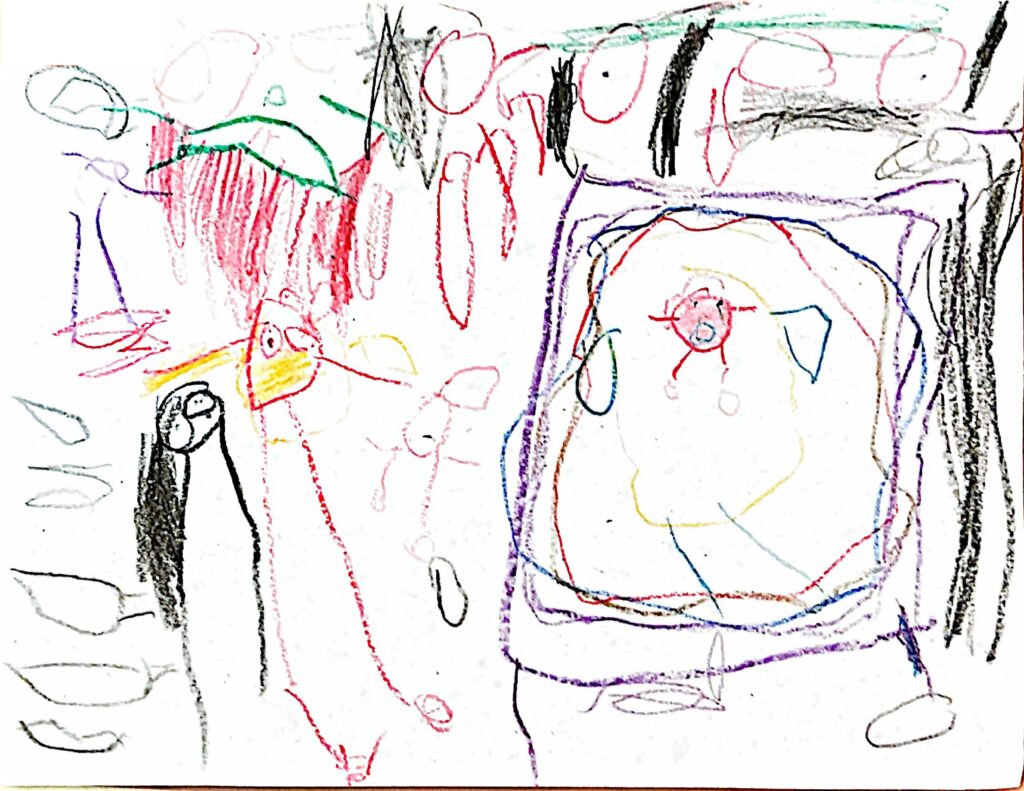
Santino is a very bilingual student. He often begins a sentence in English and finishes it in Spanish. He is very creative and always picks the art center first. He has the soul of an artist and the brain of a scientist. In the picture below he writes about his family’s trip to the beach, before his baby sister was born. He told me about the birds, jellyfish, moon, rock, and sand. Then he told me about all the shells he found. I spoke highly of his details and asked where he would add the details of the shells. I inquired if it would go on this picture or if he would add a page to his story. He instantly chose a new page. That’s what writers do, they add to their stories when they recall details. He, too, is a writer at four years old.
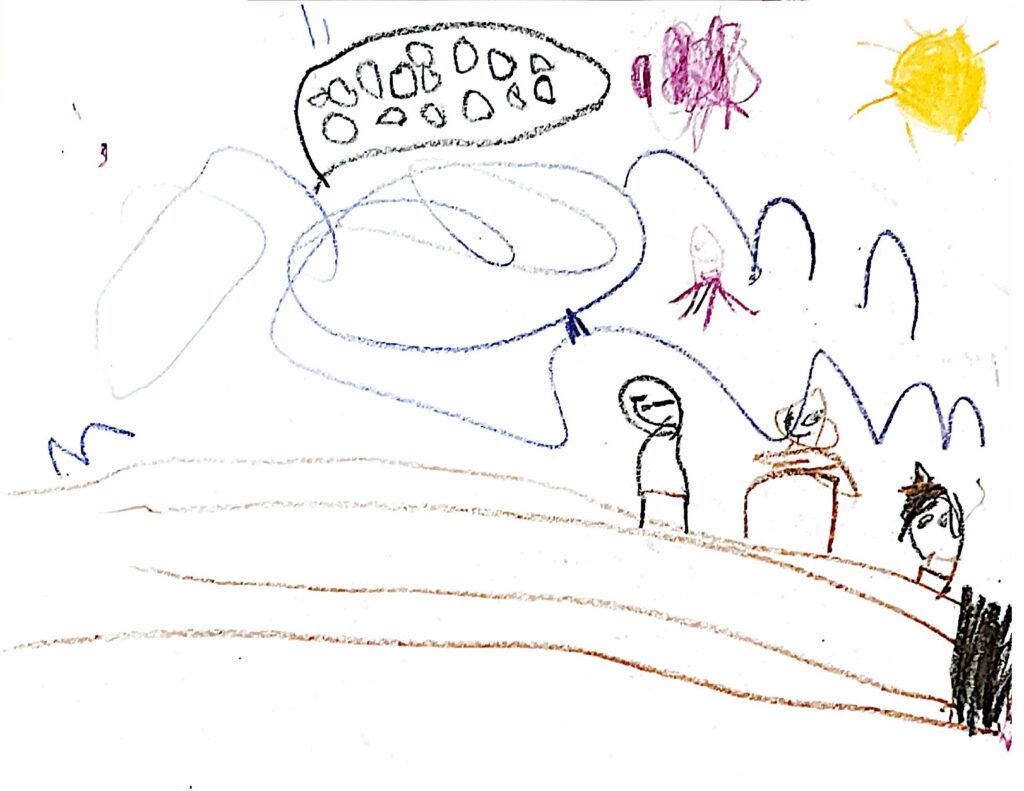
Dolores’s family speaks Spanish at home. Her family is very invested in her education even at four years old. She is sometimes shy but tries really hard to be a good student. In this drawing, she writes about her family’s trip to the pool. There is her family, balloons, paletas, and moving water. The way she depicted the pool makes me want to jump in with her. When I asked why she chose this memory to write about, she said it was a good day and she wanted to go back. Writers write about good memories all the time!
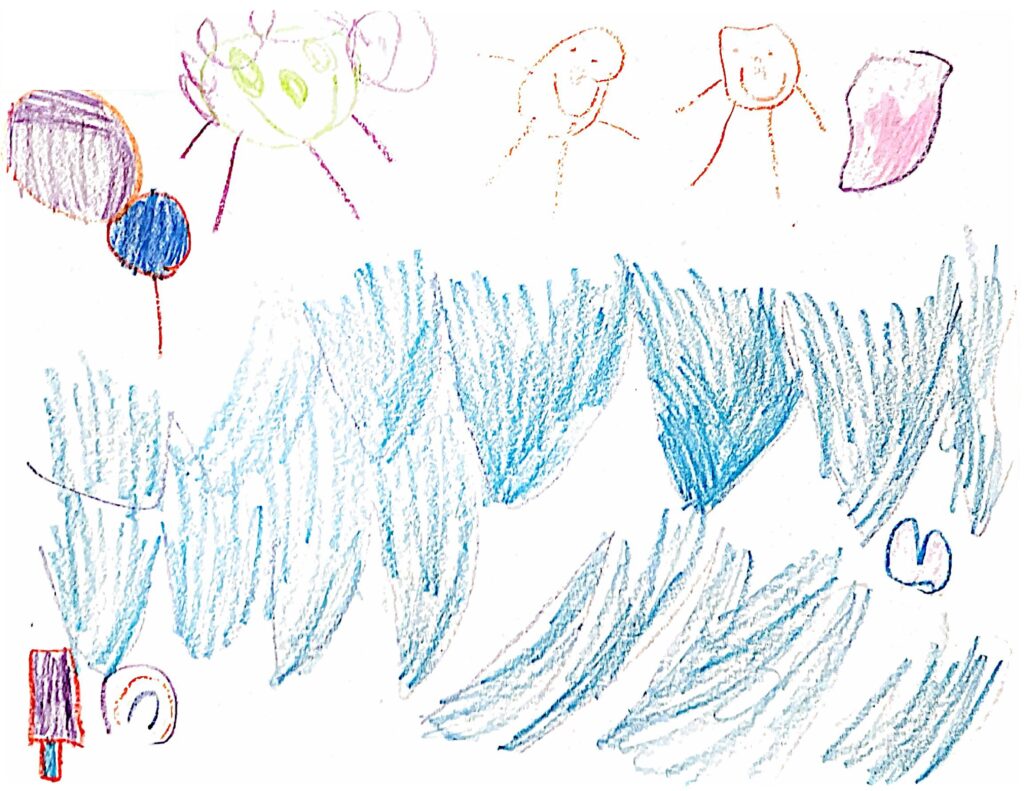
Randy Bomer once said in the writing summer institute, “You’ll never assign a topic that is better than what a kid can come up with themselves.” I’m a big believer that this is always true. I am lucky enough to get to know the fascinating students that walk through my doors. I love to see them connect themselves to their writing. It makes their work and mine rich and beautiful. I’m so lucky to know them.
 Carmela Valdez is currently an early childhood, dual language educator at L.Cpl. Perez Elementary School in Austin, Texas, in her 18th year of teaching. She has a BA in theatre from the University of Texas at Austin, an MEd in early childhood education from Texas State University and is a doctoral student at the University of Texas in language and literacy. She currently co-teaches the Heart of Texas Writing Project’s summer institute. Carmela is passionate about her students using their voice and writing to enhance their communities and families’ lives. She continues to advocate for the rights of every multilingual student and believes that language is a civil right.
Carmela Valdez is currently an early childhood, dual language educator at L.Cpl. Perez Elementary School in Austin, Texas, in her 18th year of teaching. She has a BA in theatre from the University of Texas at Austin, an MEd in early childhood education from Texas State University and is a doctoral student at the University of Texas in language and literacy. She currently co-teaches the Heart of Texas Writing Project’s summer institute. Carmela is passionate about her students using their voice and writing to enhance their communities and families’ lives. She continues to advocate for the rights of every multilingual student and believes that language is a civil right.
It is the policy of NCTE in all publications, including the Literacy & NCTE blog, to provide a forum for the open discussion of ideas concerning the content and the teaching of English and the language arts. Publicity accorded to any particular point of view does not imply endorsement by the Executive Committee, the Board of Directors, the staff, or the membership at large, except in announcements of policy, where such endorsement is clearly specified.

